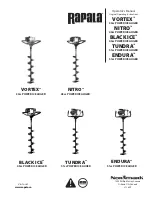
29
CHAPTER 6 – Commissioning
SMT-BD1/t
4 - SPEED CONTROL LOOP ADJUSTMENT
4.1 - Regulator parameters adjustment
Check at first that the
Speed regulator gain ratio
parameter value is set at 1 (servo loop gains adaptation
mechanism disabled).
The
Auto-tuning
procedure identifies the motor and load specifications and calculates the regulator gain
parameters. During the procedure, the operator can select a bandwidth (Low = 50 Hz, Medium = 75 Hz and High
= 100 Hz). The auto-tuning can be executed with disabled or enabled motor, but the ENABLE signal must always
be activated. The auto-tuning must be executed with the motor shaft coupled to the mechanical load: the
unwind/rewind spindle and an empty spool corresponding to the minimum diameter value.
Check for free motor shaft rotation over one revolution that is not dangerous for operator and machine before
starting the
Auto-tuning
with the
Standard
filter.
After the auto-tuning procedure, check that the motor correctly runs in both directions in speed mode with a digital
set point or in jog mode. Check the response for a small speed reference without IDC saturation.
In case of loud noise in the motor at standstill and when running, check the rigidity of the transmission between
motor and load (backlashes and elasticities in gears and couplings). If necessary, renew the auto-tuning
procedure by selecting a lower bandwidth. If the problem remains, renew the auto-tuning procedure with the
Antiresonance
filter selection.
If the motor instability is due to the coupling backlashes between the motor and the load, activate the
Reduced
stiffness at standstill
command and test its effect when the motor is at standstill and then when the motor is
running at a constant speed higher than 100 rpm.
4.2 - Enabling
The enabling can be made:
- by Profibus (
see operation diagram for the enabling procedure
- by the BPCW software, in
Software control
mode.
4.3 - Brake control
The SMT-BD1/t amplifier is equipped with a brake control signal. This brake control signal is low powered and
cannot directly control the brake. The BMM 05 AF single-axis rack is therefore equipped with a power relay that
allows the brake control but the other racks are not equipped with this relay.
The brake control is activated (relay open) or disabled (relay closed) according to the amplifier status (disabled or
enabled). The following parameters allow to adjust the brake control operation:
Brake delay active
: defines the time between the brake enabling and the amplifier disabling.
- brake activation (relay open),
- delay time (= 0 in standalone mode),
-
amplifier
disabling.
Brake delay inactive
: defines the time between the amplifier enabling and the brake disabling:
-
amplifier
enabling,
- delay time (= 0 in standalone mode),
- brake disabling (relay closed).
4.4 - Jog control
The motor is continuously running while the jog input is activated (Jog+ for a movement in the positive direction
and Jog- for a movement in the negative direction). The jog inputs can only be activated with the Profibus control
word. The following parameters allow to adjust the jog control operation:
Jog speed
: defines the motor speed set point value in jog mode.
Jog accel time
: defines the ramping time value for the motor acceleration from 0 to the maximum speed.
Jog decel time
: defines the ramping time value for the motor deceleration from the maximum speed value to 0.
For the amplifier commissioning by means of the BPCW software, jog control can be provided in the control panel
by setting the digital speed reference value.
















































